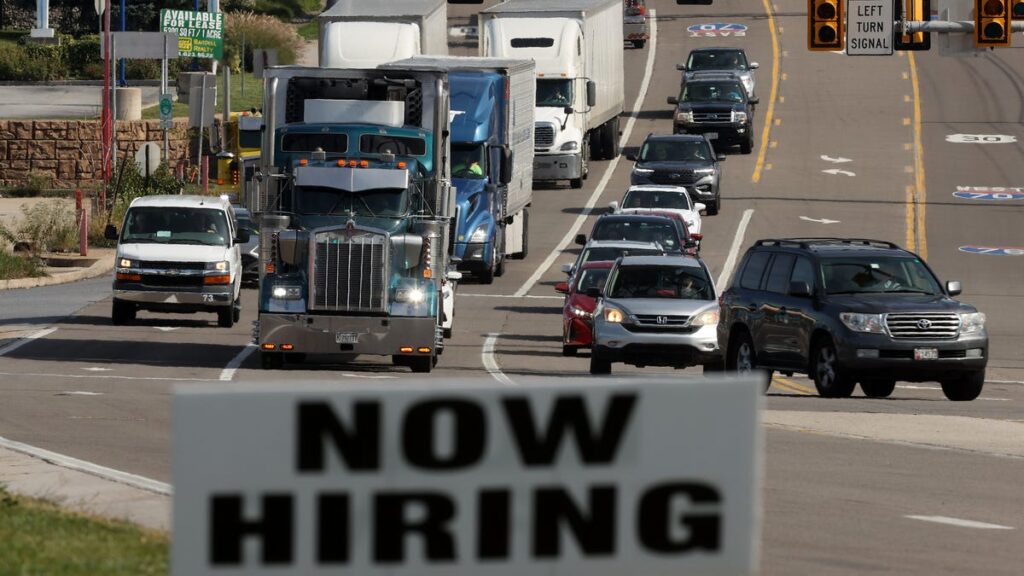It's a Hard Road for the American Truck Driver

Semi-trailer trucks move along Lincoln Highway while using the indirect interchange from Interstates 70, the Pennsylvania Turnpike and U.S. Route 30 on October 14, 2021 in Breezewood, Pennsylvania.Photo: Chip Somodevilla (Getty Images)
We’ve doubted the trucker shortage for a while now, as time and time again post-COVID, industries will cry “no one wants to work anymore” when really the job is just too miserable for the miserly pay. An incredible first-hand account from the trenches of trucker life by Wired journalist Andrew Kay paints a picture of a hard life set to only get harder in the coming years.
Kay set up with a truck stop preacher for a week in order to talk to the people who make the trucking industry—and a massive chunk of our economy—function. His prose is at turns both funny and moving, and filled observations that make the reasons for the so-called trucker shortage all to apparent:
During the week I spent at the Petro stop, drivers fumed to me about the electronic logs they must now use—tablet-shaped devices mounted on their dashboards that monitor everything they do: all their driving time, their fueling up, their loading and unloading, their napping.
This particular digital intrusion is the result of federal legislation. A law passed in 2012 dictates that truckers work a maximum 14-hour workday, spending no more than 11 hours behind the wheel with three hours of rest time. If they violate this law, they risk being yanked from the road and fined, and might mess up their carrier’s safety rating, which could deter customers, creditors, and insurers. Many drivers concede that the time restrictions arose in response to reckless behavior. “Back in the day they used to do lines of coke off the freakin’ dashboard,” one Illinois-based driver recalled. That, he explained, is how one got to New Jersey overnight. Still, the truckers I spoke to would rather decide for themselves when they’re tired.
The newer trucks are so computerized that they provide what might be termed “AI helicopter parenting”: a development supposedly meant to increase safety and fuel efficiency, but also, I’ll come to suspect, a compensation for fast-tracking newcomers through training and into driver’s seats before they’re ready. Each state-of-the-art Peterbilt in the Petro lot is equipped with at least 10 computers that govern everything from steering to braking, reducing many truckers to what are known in the industry as zombified “steering-wheel holders.” The AI alerts a dispatcher if anything aberrant happens—an abrupt stop, a missed turn—and if a driver changes lanes suddenly, the truck will defy him, jerking itself back. (The driver can override this function, but many truckers say it remains disruptive, even dangerous.)
Then there are the cameras. Ascending the cabin of one semi, I see a black gadget affixed to the windshield like an old-school GPS, its lens trained on the driver’s seat. Such cameras protect companies from liability in the event of an accident—they can prove that a driver wasn’t acting irresponsibly and thus isn’t at fault—but truckers deplore them. “Some drivers,” LeRette says, “tell me they’ve got cameras pointed back in the sleeper.”
The truckers touch on just how hard it is to get in to trucking as well, with companies holding young drivers as wage hostages with low pay and expensive training courses. And then there is the emotional toll the job takes on the drivers, from unavoidable fatal crashes, to time away from home to worry about AI trucks taking their jobs.
Kay later hits the road with a real trucker, and he experiences many of the privations and frustrations that come with being on the road. Check out the entire story here.



